Sharing is caring!
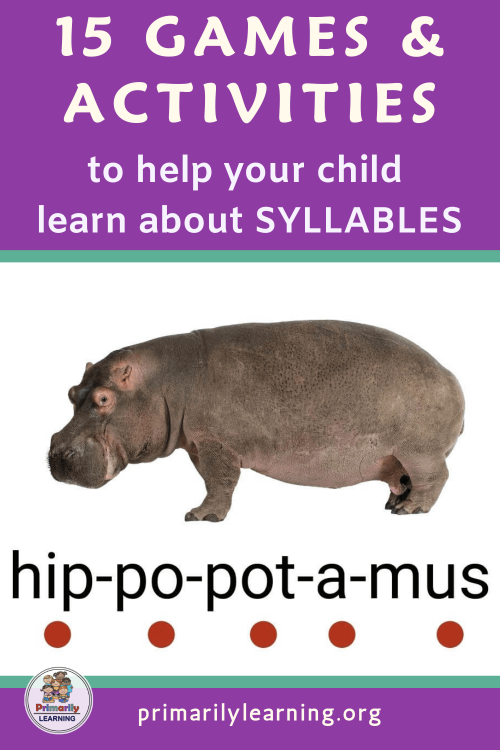

Counting Syllables is a Pre-Reading Skill
Counting syllables is an essential pre-reading skill. If your child knows the rules for dividing words into syllables, it may help him/her to read and write more accurately. Reading is complicated!
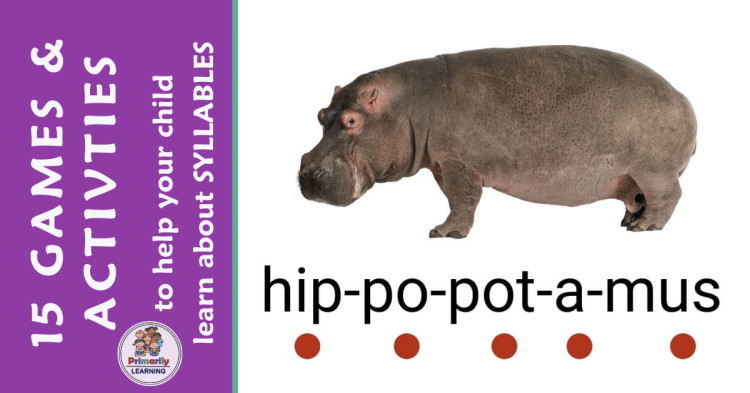
A syllable is a single, unbroken sound that is part of a word. You can count the syllables you hear in a spoken word or show the syllables in a written word. Syllables are often called the beat(s) of a word. Each beat of the word contains a vowel sound.
How do you train your child’s ear to hear and understand syllables?
1. Counting Syllables with Chin Bumps
Ask your child to place his or her hand under his/her chin. What happens when a word is spoken? Your child should notice that the chin bumps into the hand. This occurs when a part of the word with a vowel is spoken. It’s a syllable! What a great way for kids to learn about syllables. Try it! (e.g. man; dog; ti-ger; di-no-saur; el-e-phant) Count how many syllables are in each word.

2. Play Clapping Games
Clap the syllables. If extra support is needed, try this sequence. 1. Say, “Listen.” Then you say “tiger; ti-ger” (You say the word, then clap the syllables) 2. Repeat the same word after you say “Together.” (The children say the word and model your clapping pattern.) 3. The children say the word independently. Say, “By yourself.” (The children say the words and then clap the beats of the word without instructor support.)

3. Punch it Out!
Stand in a boxing stance. The teacher calls out a word (i.e., dinosaur). The teacher and class repeat the word together and then say it slowly. ( i.e., dinosaur; di-no-saur) Punch in front of you for each syllable you say/hear.

4. Slap your thighs to the beat of the word! Count the Syllables.
Say a word. Repeat the word and break it into syllables. Stand with your hands facing your thighs. Slap both thighs as you break the word into syllables. Slap the beats of the word. Challenge – Can you do this as pictured?

5. Kick it Up!
Use alternating legs and kick each syllable!

6. Jump Around. How many syllables can you jump?
Jump to the beat of each syllable.
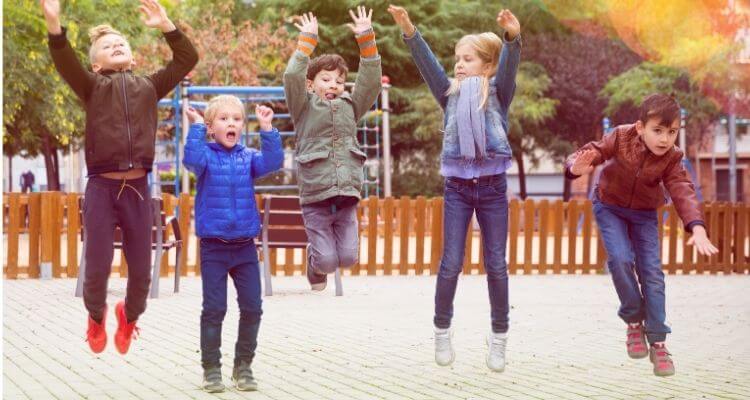
7. Drumming Out Syllables
Use a drum or tambourine (or pan!) to beat the sounds in your name, the school’s name, a Nursery Rhyme, or a favorite tune!
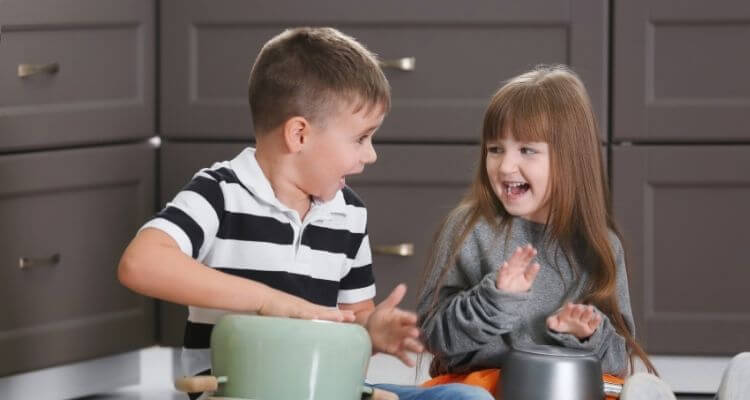
8. Mirror Fun
Stand in front of a mirror. Watch your mouth move as you say each syllable. What happens?

9. Use a Graphic of 3-5 Empty Shapes (often referred to as sound boxes or Elkonin Boxes) to Count Syllables
As in the picture below, draw five box shapes. As each syllable is spoken, place a marker into each box. How many syllables were in the word?
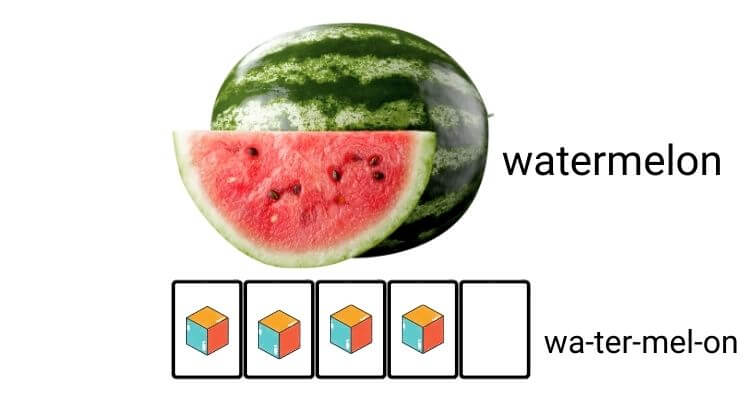
10. Picture Sorts
Use sorting mats. How many syllables are in each word? Look at a picture and say the word. Now, say the word slowly. How many syllables do you hear? Place the picture under the correct number.
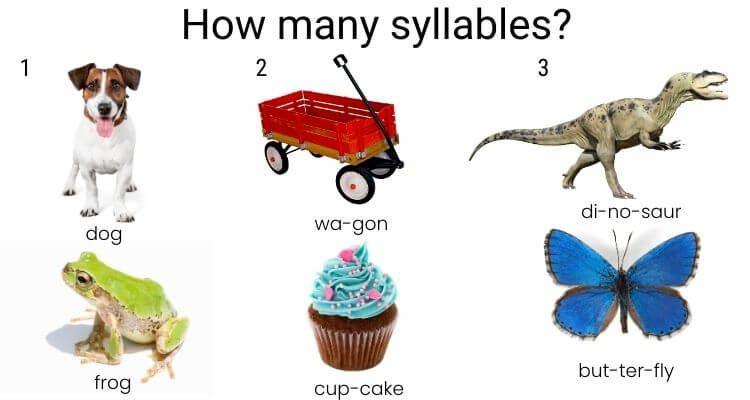
11. Re-arrange Syllables
Print a word on a Post-It Note. Cut the word into syllables. Place the syllables on a board and ask the kids to rearrange them!
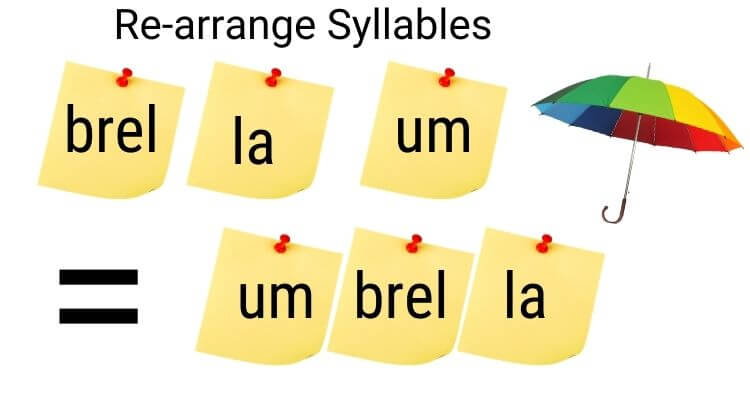
12. Mix-it Up!
Play with words! Mix-up compound words. Use two compound words. Divide them into syllables. Change the word! (e.g., bathtub, flashlight…. You might get flash-tub or flash-light!) Draw a picture to show your work. Giggle. Have fun!

13. Sorting Mats
Use sorting mats. How many syllables are in each word? Look at a picture and say the word aloud. Now say the word slowly. How many syllables do you hear? Place the picture under the correct number.
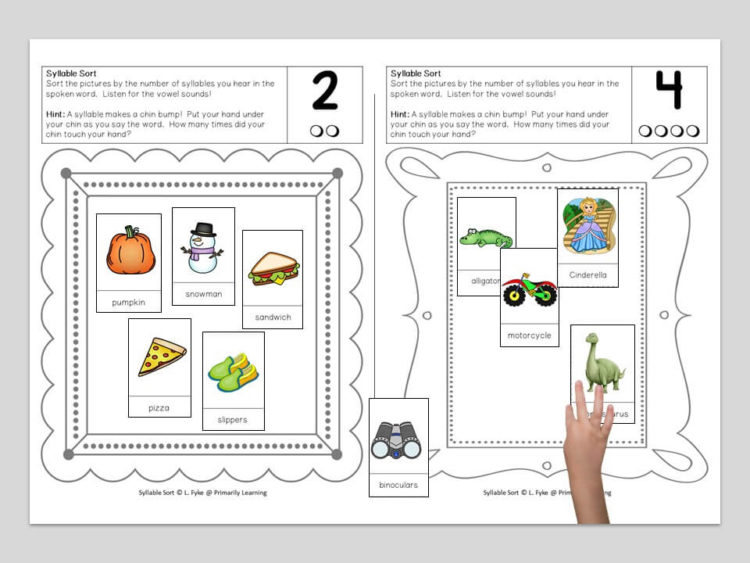
14. Syllable Completion
Connect the spoken word to print. Create a picture and word card. Divide the word into syllables. Cut the card between each syllable. Fold all syllables behind the card. Say the syllables as you unfold them. Say the whole word.

15. Robot Speak
Created by: Learning Games For Kids – YouTube Video
Differentiated Instruction
We are all different! Differentiated instruction involves tailoring instruction to meet the individual needs of your students. You may present an activity to all the kids in various ways. Certain children require more teacher modeling of a task or additional practice to fill in learning gaps. Others benefit from small-group instruction or working alongside a peer. Still other students may thrive with more challenging materials or less support as they learn. Teachers are outstanding because they strive to meet the needs of every student.
Learners Who Face a Challenge Counting Syllables
Learning about syllables is an auditory task. Struggling readers, second-language learners, and younger children may require the additional support that visual cues offer. Learning involves teacher modeling and practice counting syllables with fun activities! Use picture sorts to help these learners hear the syllables and develop confidence and understanding. Other hands-on learning activities, like Peg-it Cards for counting syllables, can also be helpful. Ensure that each learner is provided with the support and encouragement they need.
Good Memory for Sounds
Children with a good memory for sounds find it easier to sequence the sounds in longer words. The kids who catch on quickly may be ready for oral syllable activities that involve isolating, blending, segmenting, counting, and deleting. Kindergarten and grade one kids will have fun learning phonological awareness skills as they play games and complete syllable activities.
I Understand Syllables. Let’s Print the Words!
More advanced students may enjoy adding print connections to the auditory task. Challenge: Say the word. Say it slowly. Print the sounds to spell the word! Using the sounds that have been taught, is your child ready to print the missing syllable or syllables?
Syllables are often considered the phonological “building blocks” of words. Initially, children may look at a longer word and consider it too difficult to read or spell. They learn to chunk words into manageable parts. Being familiar with basic oral and then written syllable-spelling conventions will help children gain confidence and attain greater accuracy and fluency as they learn to decode (spell) and blend (read) unfamiliar words.
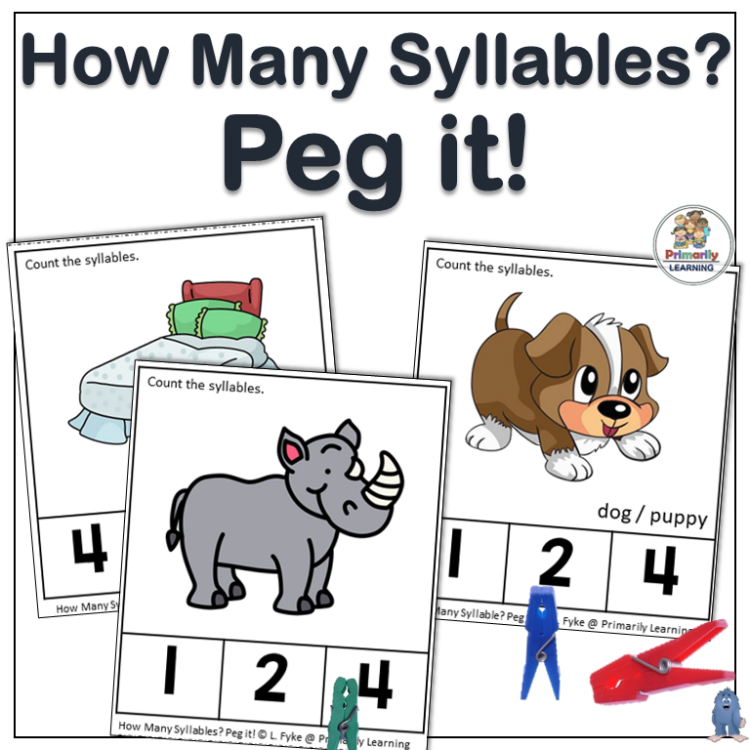
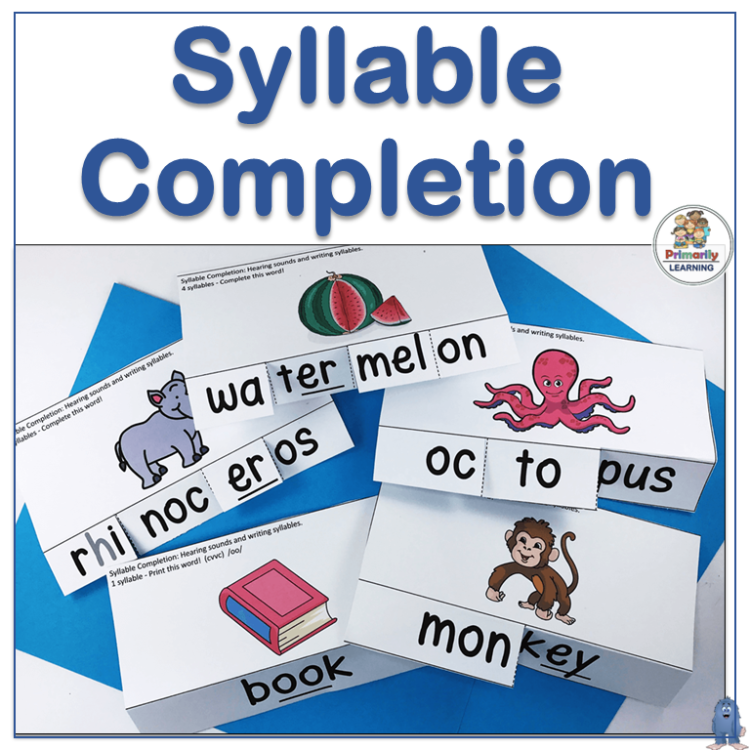
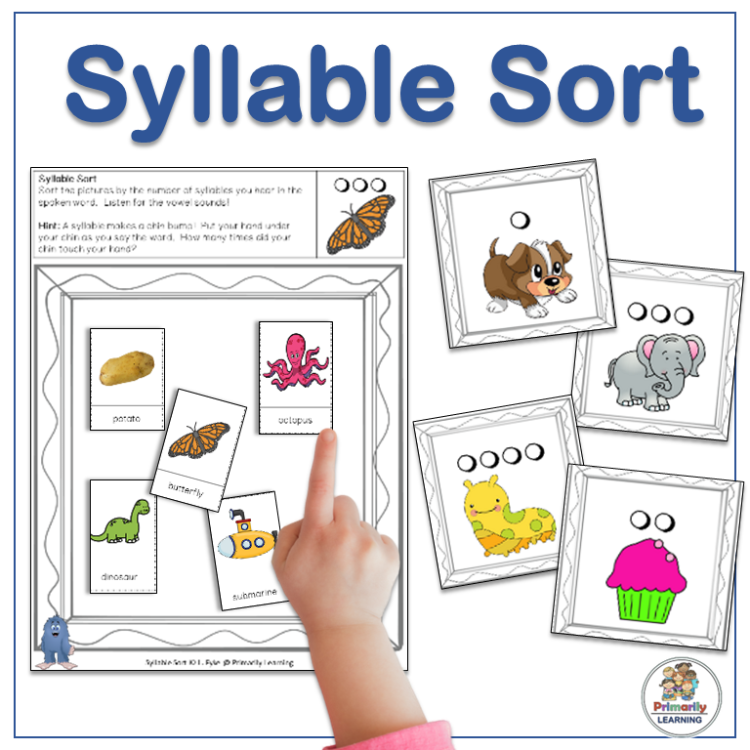
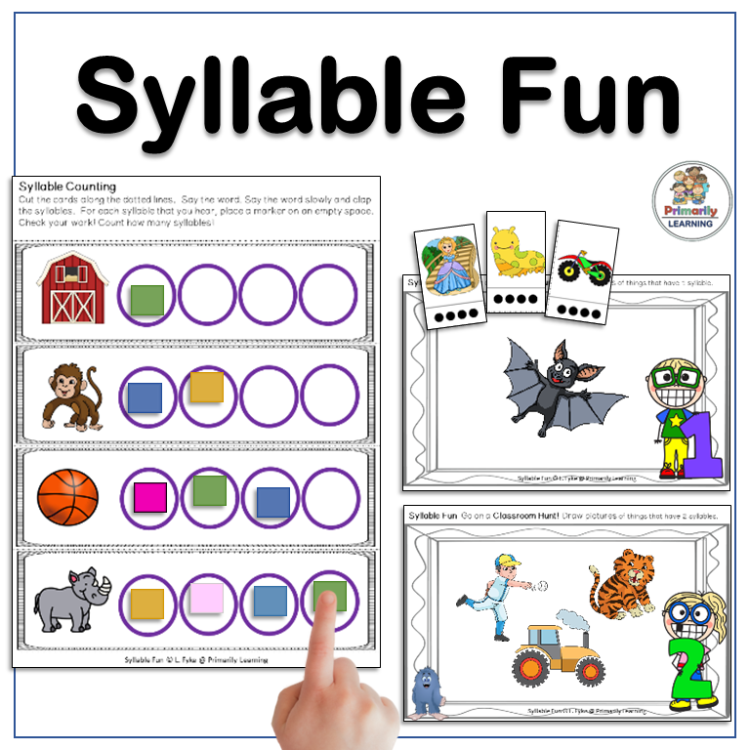
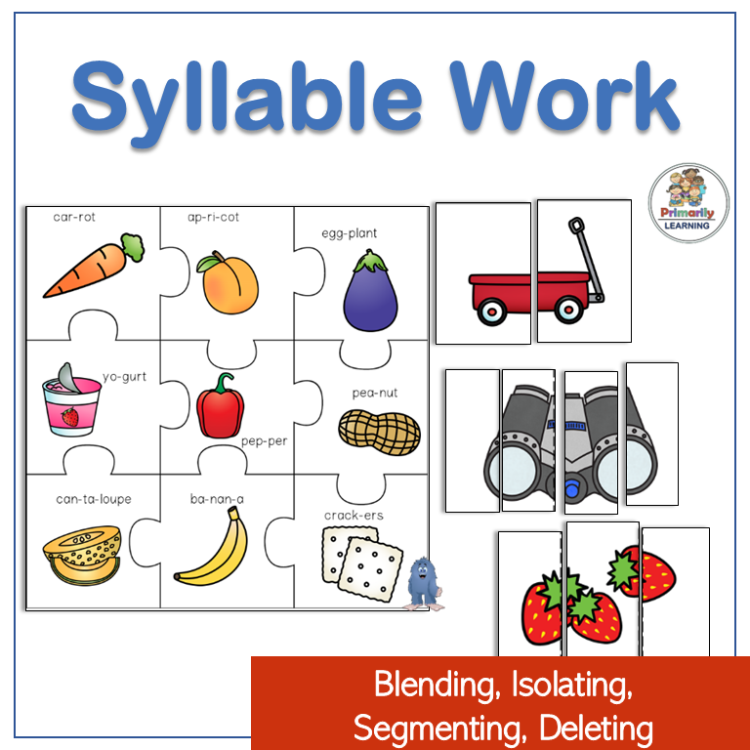
If you don’t have time to create resources or prefer things ready to go… You might find one of these ready-to-go games and activities helpful.
Titles:
- How Many Syllables? Peg-it
- Use sorting mats with Syllable Sort
- Count and find the syllables with Syllable Fun
- Fill in the missing syllables with Syllable Completion
- Blend and segment syllables with Syllable Work
PLEASE NOTE: The resources are available in Print Letters or Sassoon Font

Have fun! Keep active and engaged in the learning process.
Teach. Play. Learn.
Laurie







